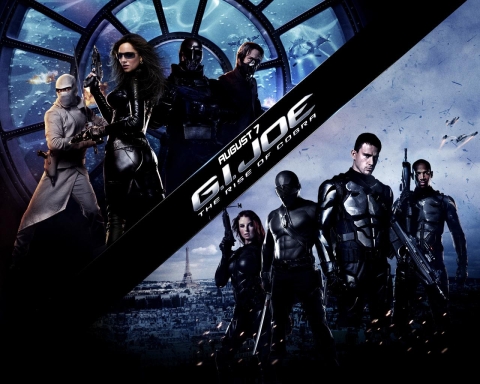
Back in 2004 Paramount released Team America: World Police, a comedy in which a special forces unit goes around the world trying to stop terrorist super villains.
A satire on the overblown stupidity of Bush-era foreign policy and Hollywood action films, it used plastic marionettes instead of actors and deliberately fake sets.
This year with G.I. Joe, Paramount have essentially made the same movie, only the actors are real (despite being based on toys) and the CGI work is only marginally more convincing than the deliberately naff sets used by Matt Stone and Trey Parker.
This is a summer blockbuster that will go down as something of a joke within the film industry as it is both sloppy and ludicrously over the top.
After the massive success of Transformers, producer Lorenzo Di Bonaventura and Paramount probably saw this as a logical successor, it being another toy franchise that had been adapted into an animated series.
The creative people involved in bringing it to the screen – principally the studio, director Stephen Sommers and screenwriters Stuart Beattie, David Elliot and Paul Lovett – have somehow created a weird hybrid of action movie and cartoon.
This was never going to be a project that would get highbrow movie lovers excited but there was perhaps a decent action film to be made along the lines of X-Men or Mission: Impossible.
But something has gone badly wrong in bringing this material to the screen: the characters are campy stereotypes, the editing is whizz-bang and the dialogue is crammed with exposition to the point of self-parody.
At times it seems like they are actually trying to duplicate the style of the animated series.
Although hardly meant to be realistic, one sequence demonstrates the nonsensical nature of how it was put together.
Much of Paris is destroyed as Joes pursue evil Cobra agents through Paris, but it is only after several streets and the Eiffel Tower are destroyed that any police show up.
Cut to the next scene in the White House where the US President is told: “The French are very upset”. To which he gives the immortal reply “of course they are upset!”.
Was this stuff added late on for laughs, so in years to come those involved could claim it was all a joke?
More puzzling is the sheer mediocrity of the elements that you might expect a film of this budget to get right.
The CGI used for various desert and underwater locations is well below par by modern Hollywood standards.
Stephen Sommers found success directing The Mummy films in 1999 and 2001 (which were OK but forgettable Indiana Jones rip-offs) but then proceeded to make Van Helsing (2004), which was one of the worst mainstream films of the decade.
He’s back now with this clunker, a film so bad that Paramount decided not to screen it for critics other than web-based ones they felt might give it some love.
They were even afraid to give it a big push at the geek temple of Comic-Con.
However, despite all its flaws it has just opened to a big opening weekend in the US and will earn a fair amount worldwide.
People will no doubt wring their hands at how a film this bad will make serious money and spawn sequels.
But there is a tradition of expensive bad films filled with meaningless set-pieces, the most notable being the Pirates of the Caribbean trilogy, a series that played more like an LSD-inspired fairground ride rather than an actual movie.
G.I. Joe will be less successful but in years to come might be known as the first post-satire blockbuster, a film which was parodied five years before it actually got made.